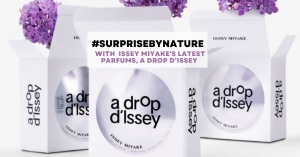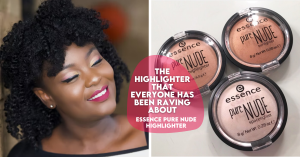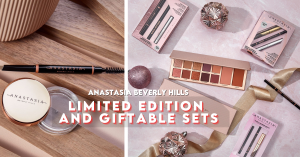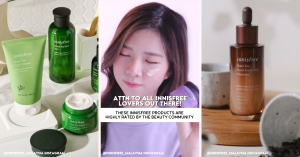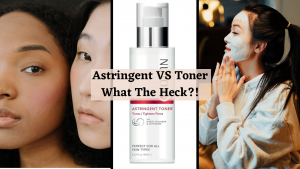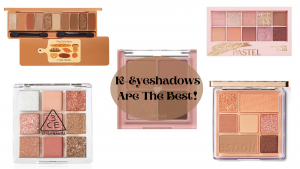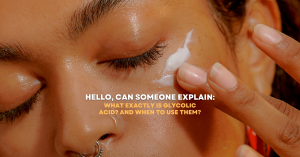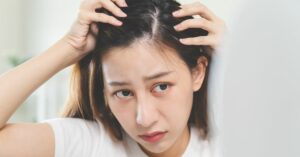Hair
Mastering The Art Of Braids From Dutch, Box, French And More
Let’s talk about braids and how they can magically transform boring old hair into a statement look. They create texture...
By: Beauty Insider Journalist / November 4, 2021

Let’s talk about braids and how they can magically transform boring old hair into a statement look. They create texture and definition and for some, it plays a significant role in their culture. Braids have been around for years and methods and techniques haven’t changed but simply passed down. Hence, Beauty Insider is here to show you all types of braids and how you can do them.
Contents
1. Dutch

Dutch braids are an underhand braid technique in which your hair stands out rather than sitting flat on your head. It’s a basic three-strand method, so if you know how to do a regular plait, the Dutch braid will be familiar to you. The Dutch braid is frequently referred to as the “reverse French braid” since both plaits involve gradually adding portions of hair. Therefore, it’s a terrific technique to dress up a simple plait hairdo or construct double braids and crown braids for a formal event.
2. Fishtail

Because it doesn’t have a difficult design, it’s one of the easiest braids to do. To keep the braid from breaking apart, split your hair into small portions (approximately half an inch) and maintain tension throughout the braid. The fishtail may be started at any position on your head using a French or Dutch braiding technique, so it will work on both short and long hair. This design may also be worn with a double fishtail.
3. Crown

The crown braid is becoming increasingly fashionable as a hairstyle for formal events such as proms and weddings. Crown braids bring out your inner princess, after all! Because the style necessitates hair with some grit and texture, it’s also ideal if you haven’t washed yours and need to hide a terrible hair day. Making a crown braid is as simple as plaiting your hair into a double Dutch or French braid; then lifting and pinning each one to the other side to form the crown.
4. French

The French braid is a timeless and feminine design that has been around for a long time. This braid is appropriate for a casual brunch, the gym, or the office. For a more professional appearance, keep it very smooth, or pull out a few face-framing pieces for a soft and romantic touch.
Moreover, French braids are also a popular hairstyle for wedding guests, and you may pair it with a fishtail braid or a half-up, half-down look. A French braid is a great choice for any event.
5. Braided buns

When it comes to this adaptable design, there are so many alternatives. Combine buns with double braids for a fashionable look. Create two Dutch braids at the nape of your neck by sectioning your hair at the centre parting.
With that, work your way to the summit of your head, bind your hair in double ponytails. Then, beginning at the front of your head, braid back to meet the other braid, make two Dutch braids. Make a little ponytail with the remaining hair, then twist the loose hair into two buns.
6. Box

Box braids are one of the most well-known Afro-textured hairstyles. To get this style, all of your hair will be sectioned into squares and fashioned into separate plaits. You may use your own hair or have extensions braided in to give you long, luscious locks that will turn heads.
They’re a protective style that may be of any length or thickness. However, if you have naturally thin or fine hair, go for smaller box braids to reduce the amount of strain on your scalp. While box braids take a long time to install, they are extremely low-maintenance and stay for weeks.
7. Cornrow

To make elevated plaits, hair is braided close to the scalp using the underhand method. Each one is neatly arranged in rows, which gives the style its name. Cornrows can be made thin or thick, mixed with other braid styles such as box braids, or used to create a fake undercut or fauxhawk. Cornrows are also a protective style that will last for several weeks with minimal upkeep.
8. Waterfall

Waterfall braids are one of the most attractive and feminine braid designs. It’s a version of the French braid with a twist. Instead of tugging in portions to weave all of your hair into the plait, you’ll simply braid over the top half of your hair, leaving the remainder unbraided.
Additionally, because the braid provides a ‘cascading’ impression, it looks well with a gentle wave haircut. Waterfall braids are a popular wedding and bridesmaid hairstyle because of their delicate, romantic atmosphere. For a lovely appearance, add a Dutch braid and some flowers or delicate hair slides.
9. Knotless

These braids are a protective style that helps natural hair development by trapping in moisture. They also won’t irritate your scalp like some other designs, and the way the braids and your natural hair are integrated will result in a smooth, break-resistant finish. These braids are feminine and attractive, and they should last four to six weeks. It’s important not to keep them in for too long, as this might cause harm to your natural hair.
10. Crochet

Lastly, crochet is one of the simplest and most straightforward methods for creating extra-long braids. Crochet is similar to weaving in that it includes braiding your hair into loose cornrows first. They are built on the base of this cornrow design.
Afterwards, hair extensions are then threaded through and fastened with a crochet hook before being plaited into your desired braid style. You may attach ready-made braids, such as box braids, which significantly reduce the time it takes to put your braids in.


